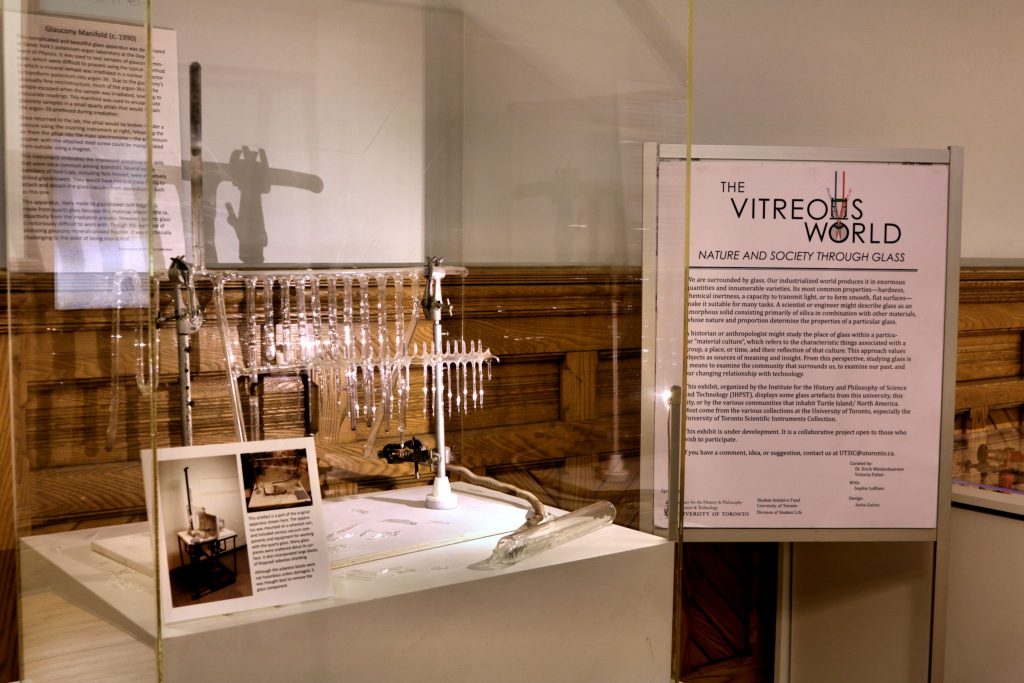2018-2020

We are surrounded by glass. Our industrialized world produces it in enormous quantities and innumerable varieties. Its most common properties—hardness, chemical inertness, a capacity to transmit light, or to form smooth, flat surfaces—make it suitable for many tasks. A scientist or engineer might describe glass as an amorphous solid consisting primarily of silica in combination with other materials, whose nature and proportion determine the properties of a particular glass.
A historian or anthropologist might study the place of glass within a particular “material culture”, which refers to the characteristic things associated with a group, a place, or time, and their reflection of that culture. This approach values objects as sources of meaning and insight. From this perspective, studying glass is a means to examine the community that surrounds us, to examine our past, and our changing relationship with technology.
This exhibit features artefacts–some made from glass, some containing glass, some to do with glass–from this university, this city, or by the various communities that inhabit Turtle Island/North America. From the vacuum glass tubes of 20th century science to elaborate glass apparatus, from 19th century optical teaching tools to student-made holograms, from glass teaching slides to glass beadwork, The Vitreous World explores the role of glass both inside and outside of scientific communities.
You can visit The Vitreous World on the 3rd Floor of Victoria College
91 Charles Street West, Toronto
10am-6pm, open when the University is open
FREE
